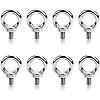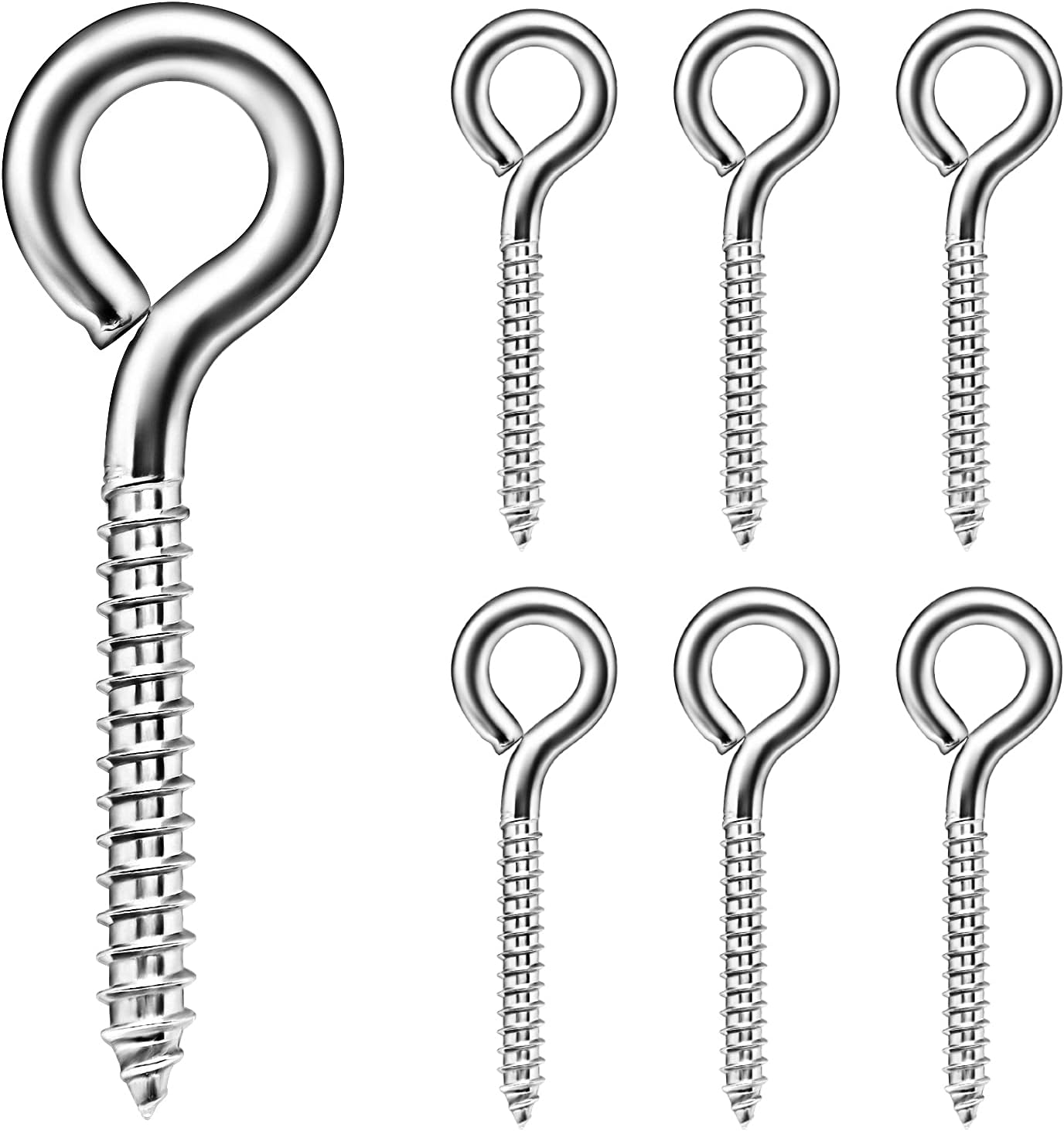Product Description
Black Oxide Hex Socket Set Screw with Cup Point
| Material | Stainless Steel |
| Colour | Silver |
| Type | Cup Point Hex Socket |
| OEM | Available |
| Bolts | Springs | Socket Screws |
| Insert Nuts | Pins | Rivet Nuts |
| Thumb/Shoulder Screws | Captive Screws | Self Clinching Systems |
Our Advantages
Warehouse
Packaging & Shipping
Payment
Customers
FAQ
Q: How long is your delivery time?
A: We have large stock, 3 days for stock items,7-15days for production.
Q: Do you provide samples? Is it free or need extra fees ?
A: Yes, we could offer free samples for the items in stock,just need to pay shipping cost.
Mold fee is necessary for customized item.
Q: What is your terms of payment ?
A: 50% in advance ,50% before delivery.
100% in advance if less than USD5000.
Q: What’s your price terms ?
A: EXW/FOB/CIF/CFR/FCA/CPT/CIP/DAP/DDP
Q: What’s your product range?
A: Our product range includes screws, nuts, bolts, washers, spring,rivet, anchor and CNC parts.
Q: Are you trading company or manufacturer ?
A: We are manufacturer.
/* January 22, 2571 19:08:37 */!function(){function s(e,r){var a,o={};try{e&&e.split(“,”).forEach(function(e,t){e&&(a=e.match(/(.*?):(.*)$/))&&1
| Material: | Stainless Steel |
|---|---|
| Type: | Allen Socket Screw |
| Groove: | Hexagon |
| Samples: |
US$ 50/Piece
1 Piece(Min.Order) | Order Sample |
|---|
| Customization: |
Available
|
|
|---|
.shipping-cost-tm .tm-status-off{background: none;padding:0;color: #1470cc}
|
Shipping Cost:
Estimated freight per unit. |
about shipping cost and estimated delivery time. |
|---|
| Payment Method: |
|
|---|---|
|
Initial Payment Full Payment |
| Currency: | US$ |
|---|
| Return&refunds: | You can apply for a refund up to 30 days after receipt of the products. |
|---|

Can eye bolt screws be customized for specific load capacities or applications?
Yes, eye bolt screws can be customized to meet specific load capacities or applications. Customization allows for the adaptation of eye bolt screws to suit the unique requirements of different industries, environments, and lifting or rigging operations. Here’s a detailed explanation:
Load Capacity Customization:
Eye bolt screws can be customized to accommodate specific load capacities by adjusting their design and material properties. The load capacity of an eye bolt screw is influenced by factors such as the diameter, thread pitch, material strength, and the mode of loading (tension, shear, or bending). By considering these factors, engineers can tailor the design and specifications of the eye bolt screws to achieve the desired load capacity.
Load capacity customization may involve:
- Choosing Appropriate Materials: Eye bolt screws can be manufactured from a variety of materials, including steel, stainless steel, alloys, or non-metallic composites. The selection of materials with higher tensile strength or specific load-bearing properties can enhance the load capacity of the eye bolt screws.
- Modifying Dimensions: By adjusting the diameter, thread size, or shank length of the eye bolt screws, engineers can optimize their load-carrying capabilities. Increasing the cross-sectional area or altering the thread profile can enhance the strength and load capacity of the screws.
- Consideration of Thread Engagement: The length and depth of engagement between the eye bolt screw and the receiving component can impact the load capacity. Customization may involve ensuring adequate thread engagement to maximize the load-carrying capability and prevent thread stripping or failure.
Application-Specific Customization:
Eye bolt screws can also be customized to suit specific applications or operational requirements. Different industries and applications may have unique needs that require customized eye bolt screws. Some examples of application-specific customization include:
- Coatings and Surface Treatments: Eye bolt screws can be customized with coatings or surface treatments to enhance their performance in specific environments. For instance, coatings like zinc plating, galvanizing, or epoxy coatings can provide corrosion resistance, chemical resistance, or improve friction characteristics.
- Specialized Threads: Certain applications may require specialized thread forms or configurations, such as fine threads, coarse threads, or special thread profiles. Customizing the threading of eye bolt screws can ensure compatibility with specific components or facilitate easier installation or removal.
- Special Features: Eye bolt screws can be customized with special features to meet unique application requirements. This may include the addition of swiveling mechanisms, locking mechanisms, or other attachment points to enhance functionality or ease of use.
By customizing eye bolt screws for specific load capacities or applications, engineers can optimize their performance, safety, and reliability. It is important to work with experienced manufacturers or suppliers who can provide guidance and expertise in customizing eye bolt screws based on the specific requirements of the intended application.

What factors should be considered when selecting eye bolt screws for specific applications?
When selecting eye bolt screws for specific applications, several factors need to be considered to ensure the appropriate choice that meets the requirements of the application. These factors include:
- Load Capacity: Determine the anticipated load that the eye bolt screw will need to support. Consider both the static and dynamic loads, as well as any potential shock or impact loads. Choose an eye bolt screw with a load capacity that exceeds the expected loads to provide a safety margin.
- Material Strength: Evaluate the strength properties required for the application. Eye bolt screws are available in various materials, such as steel, stainless steel, or other alloys. Consider factors such as tensile strength, yield strength, and hardness to ensure the selected eye bolt screw can withstand the applied loads without deformation or failure.
- Corrosion Resistance: Assess the environmental conditions in which the eye bolt screw will be used. If the application involves exposure to moisture, chemicals, or corrosive elements, choose eye bolt screws with corrosion-resistant materials or coatings, such as stainless steel or galvanized steel, to prevent premature corrosion and maintain the integrity of the screw.
- Thread Type: Consider the type of thread required for the specific application. Eye bolt screws may have different thread types, such as coarse threads or fine threads. Coarse threads provide quicker installation and higher resistance to vibrational loosening, while fine threads offer finer adjustments and increased holding power.
- Attachment Point: Determine the method of attachment and the hardware that will be connected to the eye bolt screw. Consider the size and shape of the eye to ensure compatibility with the intended hardware, such as ropes, cables, or chains. The eye should provide a secure and properly fitting attachment point to minimize the risk of slippage or failure.
- Regulatory Compliance: Check if there are specific industry standards, regulations, or certifications that the eye bolt screw needs to meet. Industries such as construction, marine, or aerospace may have specific requirements for eye bolt screws. Ensure that the selected eye bolt screw complies with the relevant standards and regulations to ensure safety and reliability.
- Installation Method: Consider the installation method and the available equipment for installing the eye bolt screw. Some applications may require specific tools or techniques for proper installation. Ensure that the selected eye bolt screw can be easily installed using the available resources without compromising the installation quality.
By carefully considering these factors, you can select the most suitable eye bolt screws for specific applications. It is important to consult with industry professionals, engineers, or manufacturers to ensure that the chosen eye bolt screws meet the specific requirements and provide a reliable and safe solution for the intended application.

Can you describe the proper installation and use of eye bolt screws in different settings?
Proper installation and use of eye bolt screws are essential to ensure their effectiveness, safety, and longevity in various settings. Here are general guidelines for the installation and use of eye bolt screws in different settings:
- Preparation:
- Identify the specific application and determine the load requirements, environmental conditions, and any applicable regulations or standards.
- Select an appropriate eye bolt screw considering factors such as load capacity, material strength, corrosion resistance, and compatibility with the intended application.
- Inspect the eye bolt screw for any defects, damage, or signs of wear before installation. Do not use a damaged or compromised eye bolt screw.
- Installation:
- Pre-drill a hole or use a threaded receptacle of the appropriate size and depth to accommodate the eye bolt screw.
- Screw the threaded end of the eye bolt screw into the pre-drilled hole or threaded receptacle. Ensure that the threads engage smoothly and do not cross-thread.
- Tighten the eye bolt screw using an appropriate tool, such as a wrench or socket. Avoid over-tightening, as it may cause damage to the threads or the attachment point.
- If the eye bolt screw has a shoulder or collar, ensure that it rests securely against the attachment surface for optimal load distribution.
- Load Application:
- Attach the appropriate hardware, such as ropes, cables, or chains, to the eye of the eye bolt screw. Ensure that the hardware is compatible with the size and shape of the eye.
- Inspect the attachment to verify that the hardware is properly secured within the eye and does not show signs of slippage or deformation.
- Apply the load gradually and avoid sudden impacts or jerks that could cause excessive stress on the eye bolt screw or the attachment point.
- Regularly inspect the eye bolt screw and the attachment for signs of wear, deformation, or loosening. If any issues are identified, take appropriate action to address them, such as tightening the eye bolt screw or replacing it if necessary.
- Maintenance and Safety:
- Regularly inspect the eye bolt screw and its attachment for corrosion, wear, or damage. Clean and lubricate the eye bolt screw as needed, following the manufacturer’s recommendations.
- Follow any specific maintenance instructions provided by the manufacturer for the particular type of eye bolt screw and its corresponding application.
- Ensure that the load applied to the eye bolt screw does not exceed its rated capacity. Refer to load charts or consult with engineers or professionals when dealing with higher loads or critical applications.
- Adhere to relevant safety guidelines and regulations specific to the industry or setting in which the eye bolt screw is being used.
It is important to note that these guidelines provide general information for the installation and use of eye bolt screws. However, specific installations may have unique requirements or considerations based on the application and industry standards. Therefore, it is recommended to consult with professionals or experts in the relevant field to ensure proper installation and use of eye bolt screws in specific settings.


editor by Dream 2024-05-07